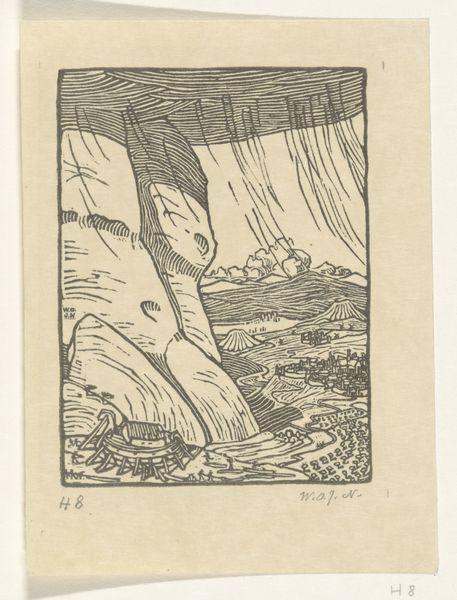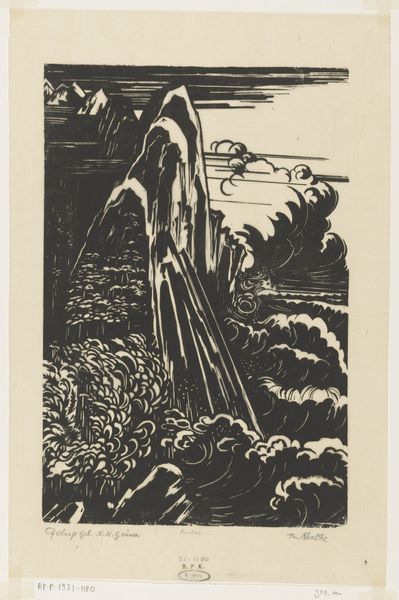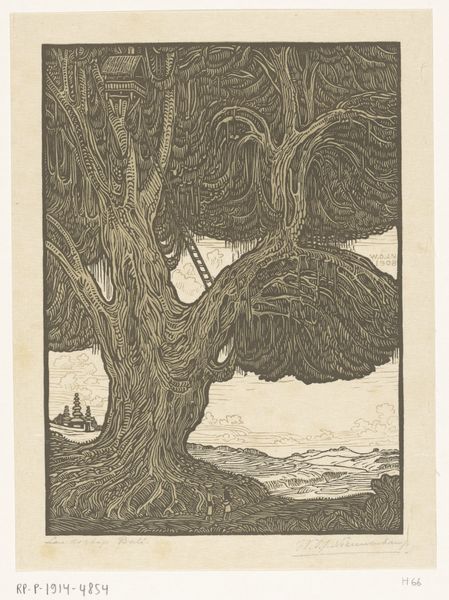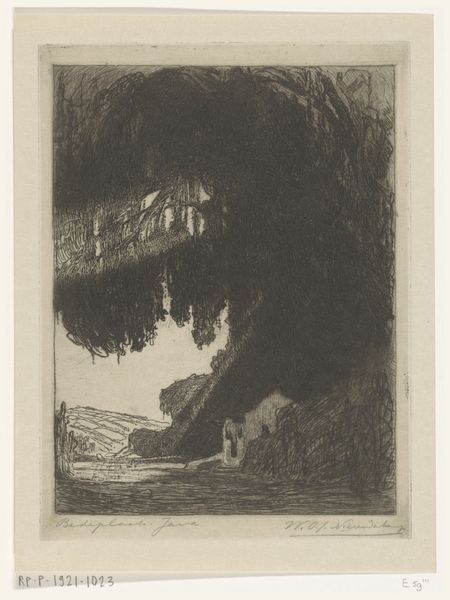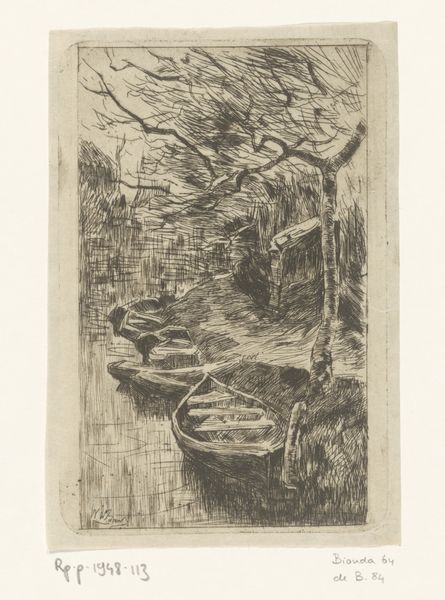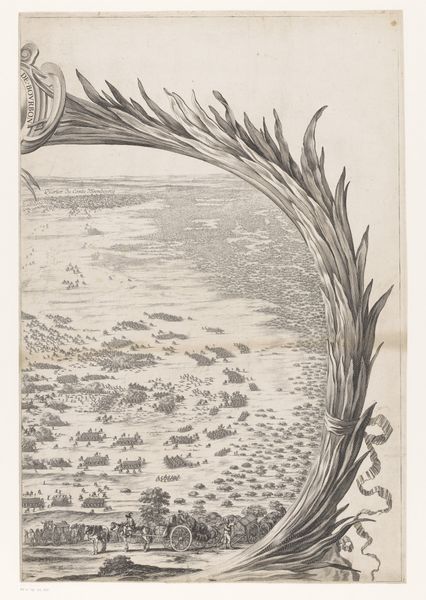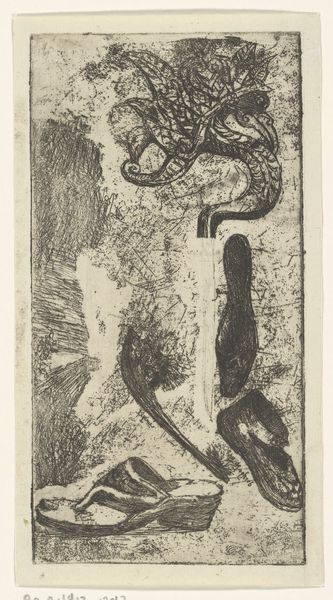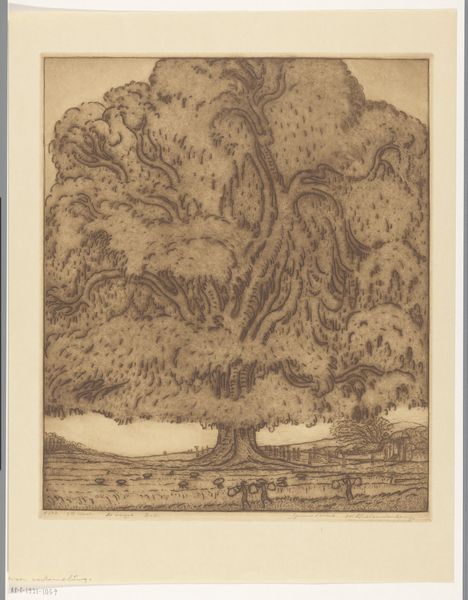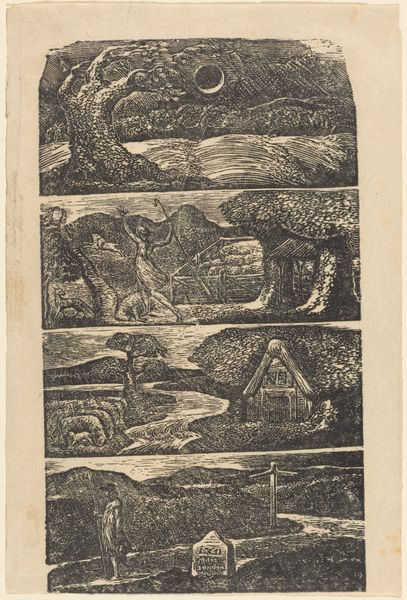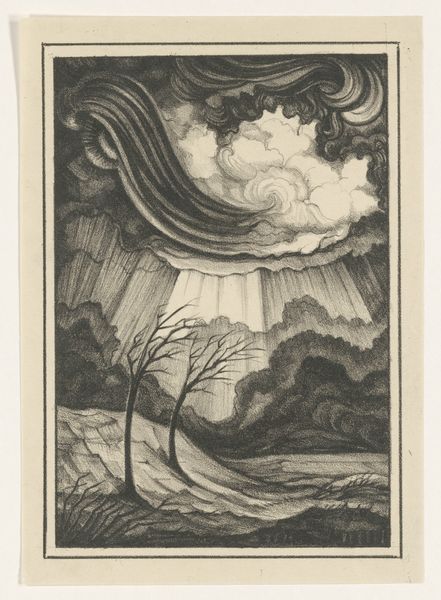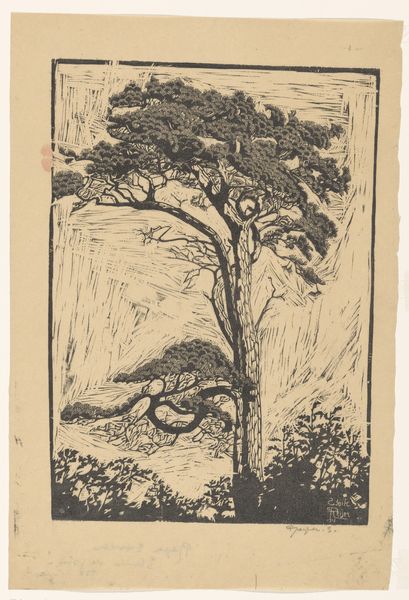
drawing, print, ink, pencil
#
drawing
# print
#
pencil sketch
#
landscape
#
ink
#
pencil
Dimensions: height 238 mm, width 160 mm
Copyright: Rijks Museum: Open Domain
Curator: Here we have Wijnand Otto Jan Nieuwenkamp’s "Wooden Bridge Over a River Gorge in Bali," created around 1908, using ink and pencil. What strikes you first about this piece? Editor: It’s incredibly delicate. There’s a definite moodiness created by the detailed, almost frantic lines juxtaposed against the serene subject matter. The whole image is kind of dwarfed by the paper it’s printed on. Curator: Yes, Nieuwenkamp was quite the adventurer, traveling extensively throughout the Dutch East Indies. His prints, drawings, and paintings offered Europeans a glimpse into a world that, for many, was still largely unknown. He would later use those studies in a series of widely distributed etchings, like this one, playing a critical role in shaping Western perceptions of Indonesian culture. Editor: Right, but looking closer, I’m really taken by the artist’s hand in representing Balinese architecture. This is, of course, no suspension bridge built of steel girders. You see the raw, unadorned labor involved in spanning that gorge, that material reality. There’s also something precarious in that visual representation. Curator: It is a precarious setting and, given his peripatetic existence, perhaps speaks to his experience of continually traversing cultural boundaries. I’m intrigued by the tiny figures crossing the bridge, how the small scale serves to emphasize the majesty and power of nature itself. The landscape becomes almost allegorical, representing challenges to overcome or perhaps the interconnectedness of communities. Editor: Possibly. Or it just speaks to how Westerners would have idealized their view of non-Western territories. But beyond this being a mere representation, I wonder if it's fair to consider how mass production transformed what could have simply been a drawing into an economic object. I mean, where did the materials come from? What was the relationship between Nieuwenkamp, the printer, and the consumer in Europe? Curator: Those are compelling considerations. Certainly, mass production enabled wider distribution, shaping cultural perceptions across socio-economic strata. It also created a demand, perhaps fueled by colonial fantasies and exoticism. Ultimately, artworks such as this serve as fascinating records of cross-cultural interactions during a transformative era. Editor: Well, regardless, I certainly am compelled to appreciate the level of artisanship and also think more critically about its broader socio-economic implications and material history. Curator: Absolutely, a lens that only enhances our understanding.
Comments
No comments
Be the first to comment and join the conversation on the ultimate creative platform.
